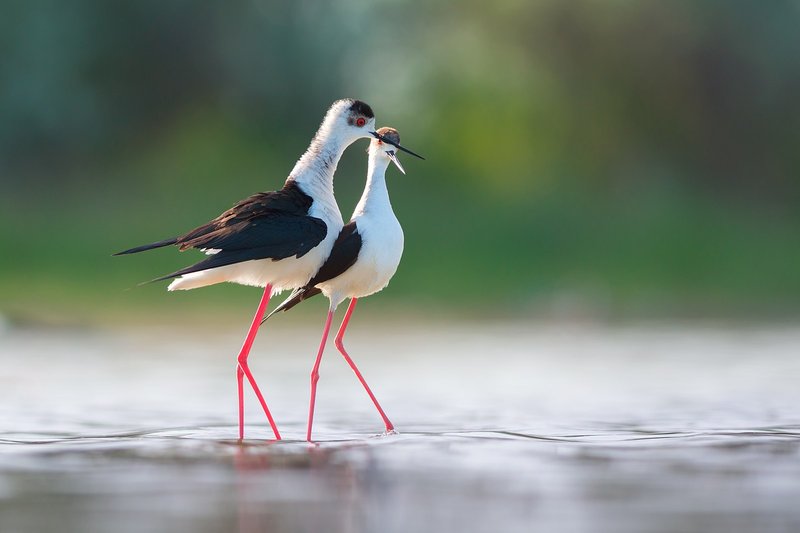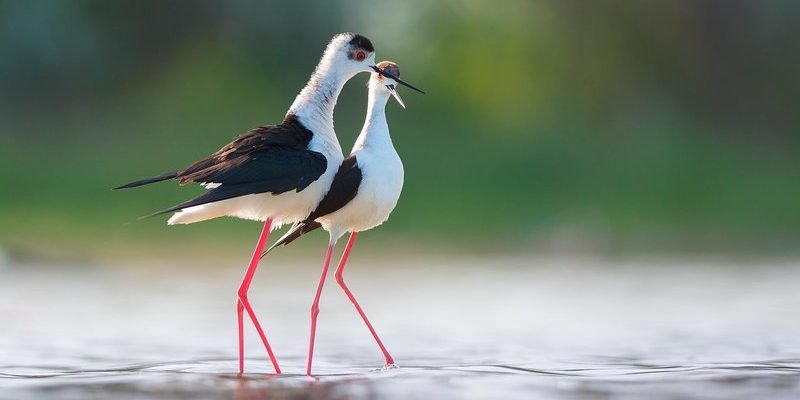
Imagine a first date—there’s excitement in the air, a little nervousness, and a lot of playful banter. Lovebirds engage in their own version of this dance, filled with vibrant displays, sweet sounds, and some unexpected behaviors. They’re not just adorable; their rituals play a vital role in strengthening their pair bonds. So, whether you’re considering getting a pair of lovebirds or you’re simply curious about these delightful creatures, understanding their courtship can bring a whole new appreciation for them.
The Importance of Pair Bonding
Before we delve into their courtship rituals, it’s essential to understand why pair bonding matters for lovebirds. These birds naturally form strong emotional connections with their mates, which isn’t just about romance; it’s vital for their well-being. In the wild, lovebirds rely on each other for companionship, protection, and even food.
When lovebirds bond, they experience reduced stress and a greater sense of security. Just think of them as social butterflies that thrive on connection. A well-bonded pair will often preen each other, which is like giving their partner a little love massage. This grooming behavior strengthens their bond and forms a protective layer against predators.
You might be wondering if lovebirds can be happy alone. While some can adapt, they generally flourish when paired with a compatible mate. It’s almost like watching a couple who are best friends—they support and nurture each other through thick and thin.
The Courtship Dance
One of the most delightful aspects of lovebird courtship is their courtship dance. This dance showcases their playful nature and can be quite entertaining to watch. The male lovebird often leads this ritual, puffing out his feathers and bobbing his head. He may also exhibit a series of quirky movements, hopping around to grab the female’s attention.
During this performance, you might hear sweet whistles and chirps, almost like a serenade. It’s a captivating sight, and honestly, it can be hard not to smile while watching it unfold. The female, usually playing hard to get at first, will respond with gentle sounds and sometimes mimic the male’s actions, creating an adorable back-and-forth interaction.
The courtship dance isn’t just for show; it’s a critical step. It allows them to gauge each other’s interest in starting a partnership. If both birds are receptive, the dance will often lead to deeper interactions, such as mutual preening and snuggling, which are essential for solidifying their bond.
Once a lovebird couple establishes their bond, they turn their attention to nesting. Nesting behavior is crucial for their mating rituals and sets the stage for potential breeding. Lovebirds are known to be excellent nest builders, and this is where their creativity shines.
Typically, the pair will look for suitable nesting materials, such as soft grasses, feathers, or even shredded paper. The male will often bring materials to the female, showcasing his commitment. You might see them working together as they prepare a cozy nest. It’s like a little construction project, and it’s all about creating a safe haven for their future chicks.
During this phase, the pair often becomes even more affectionate, spending time close together and reinforcing their bond. It’s fascinating how nesting ties into their mating ritual, ensuring they have a strong partnership before welcoming new life into their little world.
Now, let’s talk about the actual mating process. Lovebirds don’t just jump into mating—they have a series of rituals that build up to this intimate act. As their bond solidifies, the male will often mate with the female in a gentle and careful manner. You might catch them in a quiet moment, where the male will softly chirp, and the pair will lean toward each other in a sweet display of trust.
The female will usually be receptive when she’s ready to mate, which can be observed through her body language. She may display a more relaxed posture and even solicit the male’s attention with gentle vocalizations. It’s essential that both birds feel comfortable and safe, as intimacy in the bird world is built upon mutual respect.
After they mate, the pair often engages in post-mating behaviors, like preening and cuddling. It’s a reinforcement of their bond, wrapping up their courtship with a warm, loving energy. Isn’t it lovely how their relationship grows through these shared moments?
Territoriality plays a significant role in the courtship and mating rituals of lovebirds. In the wild, these birds establish their territory to attract mates and fend off rival suitors. A defined territory ensures they have enough resources, like food and nesting sites, to support a potential family.
When a male claims an area, he often engages in various displays to communicate his ownership. This may include singing, puffing up his feathers, and even performing aerial acrobatics. It’s like raising a flag to announce, “This is my turf!” His displays are designed to impress any females in the vicinity and deter other males.
As a bird owner, if you’re keeping lovebirds at home, it can be beneficial to create a safe, defined space for them. This encourages natural behaviors and helps your lovebirds feel more secure as they prepare to court and mate.
Once lovebirds have successfully mated, you may wonder what happens next. Breeding is an exciting phase that involves laying eggs and caring for their chicks. After mating, the female typically lays a clutch of eggs—usually between 4 to 6—and will incubate them for about 21 to 24 days.
Both parents play a role in raising their young. After the chicks hatch, the parents will feed them a diet rich in soft foods, which is crucial for their growth. It’s quite a sight to see the devoted lovebird parents work together, ensuring their little ones are healthy and happy.
Raising chicks is not just about feeding; it also involves teaching them essential skills. Once they’re old enough, the parents will encourage them to explore and stretch their wings, preparing them for independence. This nurturing behavior doesn’t just create strong bonds within the family; it also reflects the deep emotional connections lovebirds form throughout their lives.
In the end, the courtship and mating rituals of lovebirds reveal so much about their personalities and social structures. From the charming courtship dance to the nurturing care they provide their chicks, these birds exemplify the beauty of connection and companionship in the animal kingdom.
Understanding their rituals not only deepens our fascination with these colorful creatures but also emphasizes the importance of nurturing relationships—both in the wild and at home. So, whether you’re a proud lovebird parent or just an admirer of these affectionate birds, there’s a lot to appreciate about their romantic journey. Who knew that such small creatures could teach us so much about love?

